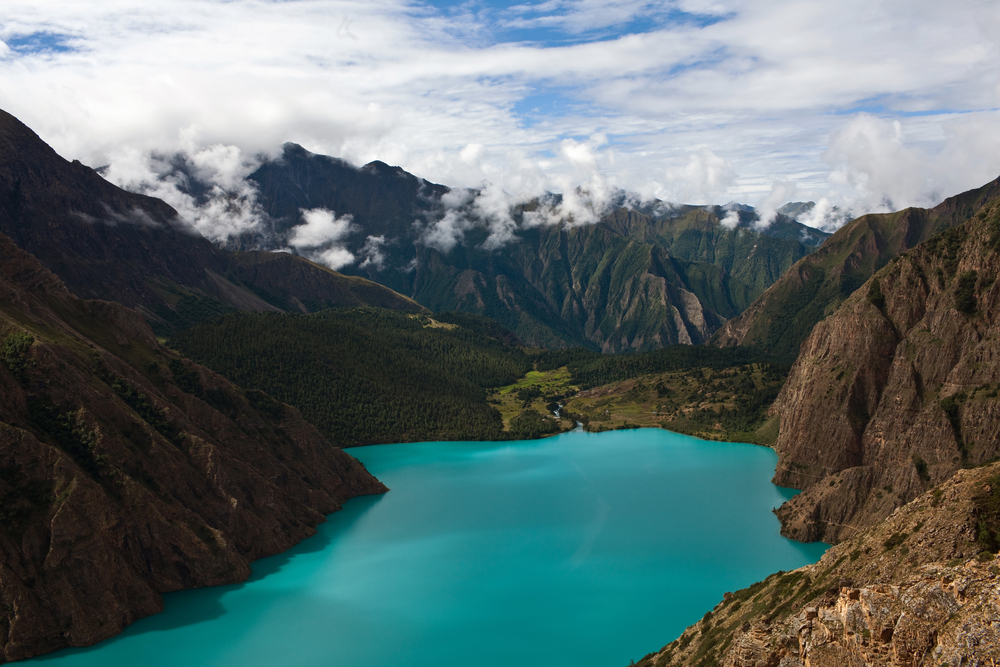Shey Phoksundo Overview
Shey Phoksundo National Park, located in the Dolpa and Mugu districts of Nepal, is the largest national park in the country, spanning 1,349 square miles (3,555 square kilometers). Established in 1984, this breathtaking park encompasses a rugged expanse of the Himalayan region, where the landscapes and biodiversity leave visitors awestruck. Known locally as शे-फोक्सुन्डो राष्ट्रिय निकुञ्ज, the park derives its name from Shey Gompa, an ancient monastery, and the stunning Phoksundo Lake, one of its central attractions.
The park’s terrain is diverse, ranging from lush green valleys and alpine meadows to barren, windswept plateaus and jagged mountain peaks. Towering elevations range from 6,600 feet (2,000 meters) to 22,966 feet (7,026 meters) at Kanjiroba Mountain. Phoksundo Lake, located at an altitude of 11,849 feet (3,612 meters), is a turquoise jewel renowned for its striking color and pristine clarity. This lake, considered sacred by local communities, is surrounded by steep cliffs and waterfalls, including the impressive Suligad Waterfall, which plunges dramatically into the valley below.
Shey Phoksundo National Park boasts rich biodiversity, with over 200 species of birds, 32 mammal species, and countless varieties of plants. Notable wildlife includes the elusive snow leopard, a key species for conservation, as well as blue sheep, Himalayan tahr, musk deer, and red panda. Bird enthusiasts can spot species like the Himalayan monal, Tibetan partridge, and white-throated tit. The park’s unique ecosystems, including temperate forests of pine, fir, and birch, support diverse flora and fauna that have adapted to the challenging conditions of the Himalayas.
One of the most captivating features of the park is the Dolpo region, an isolated and culturally rich area that offers glimpses into Tibetan traditions. Visitors can explore ancient monasteries such as Shey Gompa, which dates back to the 11th century, and interact with the local Dolpo-pa communities, who live harmoniously with nature. Trekking through the park is a popular activity, with trails such as the Shey Phoksundo Circuit and the Upper Dolpo Trek providing unparalleled experiences of its dramatic scenery and cultural heritage.
The park faces several conservation challenges, including human-wildlife conflict, overgrazing, and climate change, which threaten its fragile ecosystems. However, significant strides have been made in sustainable management, involving local communities in conservation efforts. Initiatives such as eco-tourism, wildlife monitoring, and habitat restoration have bolstered the park’s ecological health and cultural preservation.
For visitors, the park offers transformative experiences, from trekking along high-altitude trails and meditating in centuries-old monasteries to marveling at the stunning Phoksundo Lake and spotting rare wildlife in their natural habitat. Shey Phoksundo National Park is a testament to Nepal’s commitment to preserving its natural and cultural heritage while offering a haven for adventurers and nature enthusiasts alike.










































































